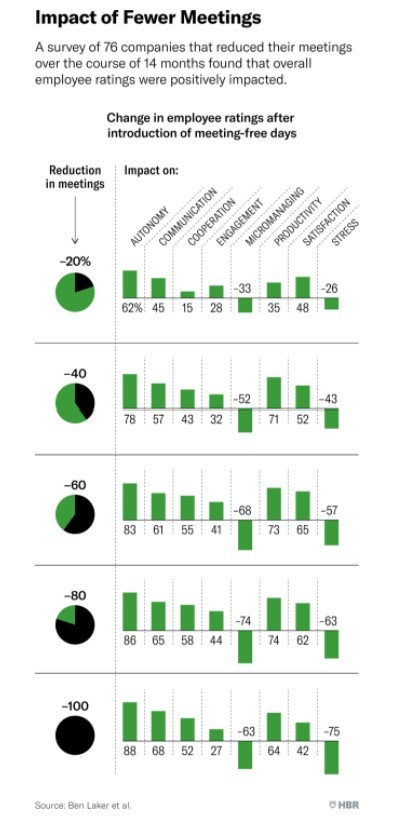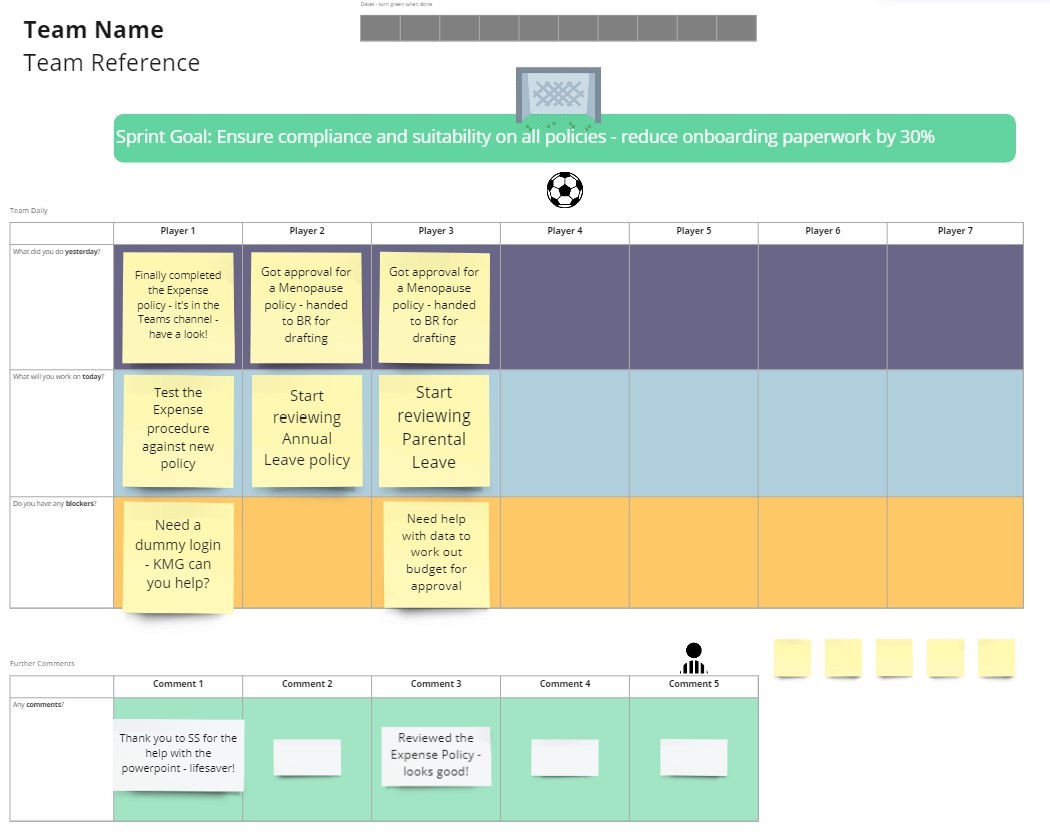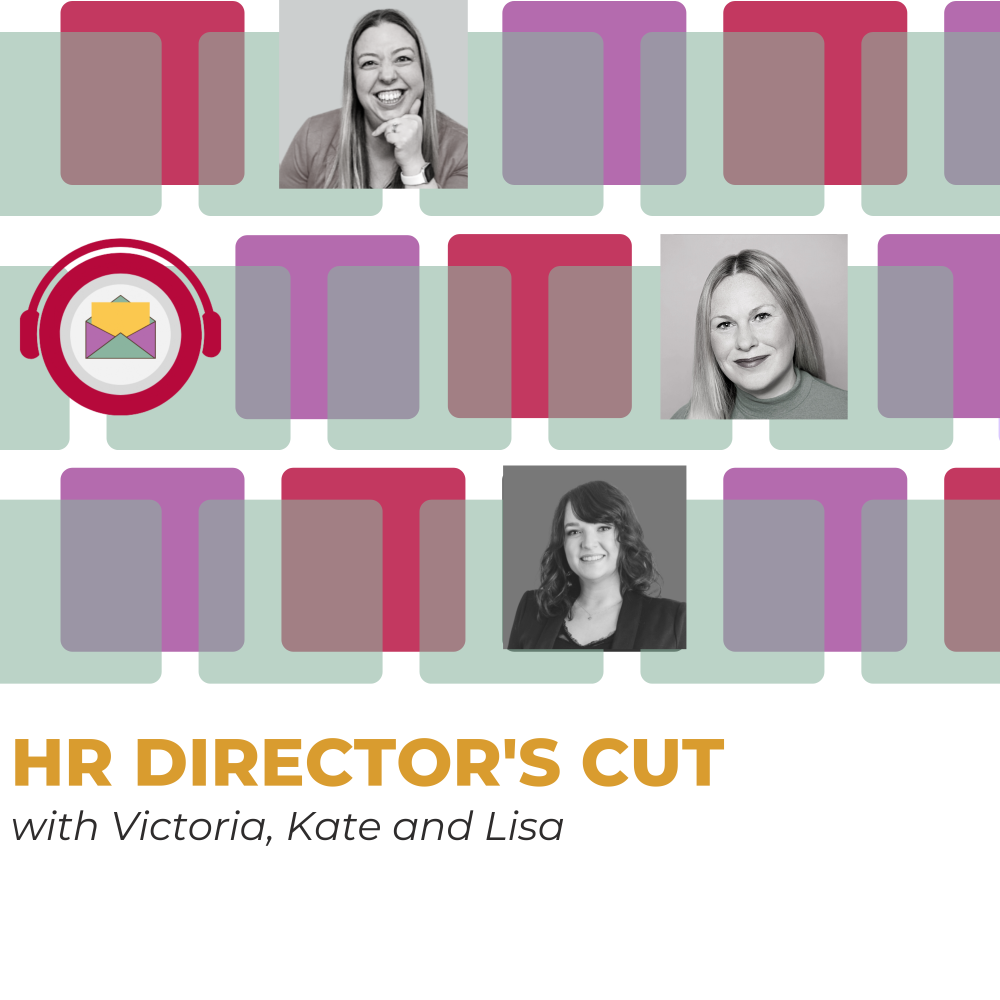Ineffective meetings that waste our time can negatively impact psychological, physical and mental wellbeing.
This is what my meetings used to look like:
- I need to keep my team updated – have a meeting
- I need to gather opinions – have a meeting
- I need to raise my credibility to those above me – find an excuse to have a meeting
- I need to make sure my team are OK – have a meeting.
Regular meetings, adhoc meetings, client meetings, update meetings, strategy meetings, wellbeing meetings, 121 meetings, performance review meetings. I instigated meetings and attended every one I was invited to (FOMO!). I probably don’t need to go on.
Before I knew it, my diary was full – which made me feel valuable, indispensable, and firing on all cylinders. I was a communication dream machine. I had a slide deck and was prepared to travel.
The problem with meetings is that they usually only benefit one person.
Does the following sound familiar?
All the junior employees provide a load of information to their manager, then watch their peers do the same for their managers. Then they await for the outcome of the meeting to see what all the managers have decided the information MEANS.
So, really it’s just cementing the hierarchy of the company. Managers have the authority and they know best.
New research shows that about 70% of all meetings keep employees from working and completing all their tasks. While there was a 20% decrease in the average length of meetings during the pandemic, the number of meetings attended by an employee on average rose by 13.5%. Ineffective meetings that waste our time can negatively impact psychological, physical, and mental well-being.
Vijay Pereira (Professor of Strategic and International Human Capital at NEOMA Business School) ran a recent survey of 25,000 and found that the people who demanded the most meetings were younger or newly-promoted managers – especially men – who were “keen to be visible… but also to send a signal that they were in control”.
That control is expensive: if a manager uses a two-hour meeting with 18 colleagues to make some decisions, they’re spending person-hours equivalent to one person doing an entire week’s work.
So what happens if you reduce meetings?
Pereira found that “Micromanaging came down when there were less meetings, and stress came down… autonomy increased, communication was better, there was better cooperation, there was better engagement, there was better productivity, and there was better satisfaction.” By removing 60% of meetings you can increase co-operation by 55% (source HBR).
Employees are, well, human (for now, until the robots take over!). On the whole they are sociable creature that want interaction. So meetings can be a good thing – if used sparingly and with purpose. And benefit all attendees, not just those at the top. So let’s explore how we can wrestle those meeting reins off those micro managers and replace the interactions in a way that will invigorate and energise your employees.
How can you do it?
Scale back your meetings and be selective on the ones that you attend. Meetings that are useful tend to be those that are focused on:
- Reviewing work that’s occurred (what worked or didn’t and why)
- Clarifying and validating something (policies, team goals, etc.)
- Distributing work appropriately among your team
Even with the above – does everyone need to be there? Perhaps you could trial a ‘no meeting day’.
Look to see what happens if a meeting is dropped – does it make a difference?

Consider other ways to communicate
Ensuring the team is focused on their goals is important, and having awareness of what others are doing is helpful. Tools like Slack and Teams can really help here – make sure you are using them to their full potential! You could also consider changing your Daily Stand Up to an asynchronous method, like the one below. Give a timescale where people have to fill it in (between 9-9.30am is common). Have fun with it – I use different themes. Currently on a football one!:

Use a digital tool for asynchronous collaboration
Brainstorming is fab, but often when you get several people together the loudest voices (I’m one of them!) can take over in the battle to get their ideas in. By using something like Miro or Mural, you can set the objective and get people to submit ideas, comment, create and reflect over a set time period. Then use a meeting to verify and get consensus for a decision. Or, if you’re feeling brave, try making even the decisions asynchronous!
At People Efficient, we use the Agile mindset together with frameworks like Scrum to get your teams focused and performing at a high level. Get in touch to find out how.

Have you listened to my 5 star reviewed podcast? You can find it on your podcast platform of choice – just search for ‘HR Director’s Cut’!
“Brilliant work, brilliant women. It’s like inviting 3 HR Mentors into my kitchen every Friday night! Energy, fun, humour and most of all, genuine, no fluff, put your big pants on and pull ‘em up high mentoring! I love it!”



